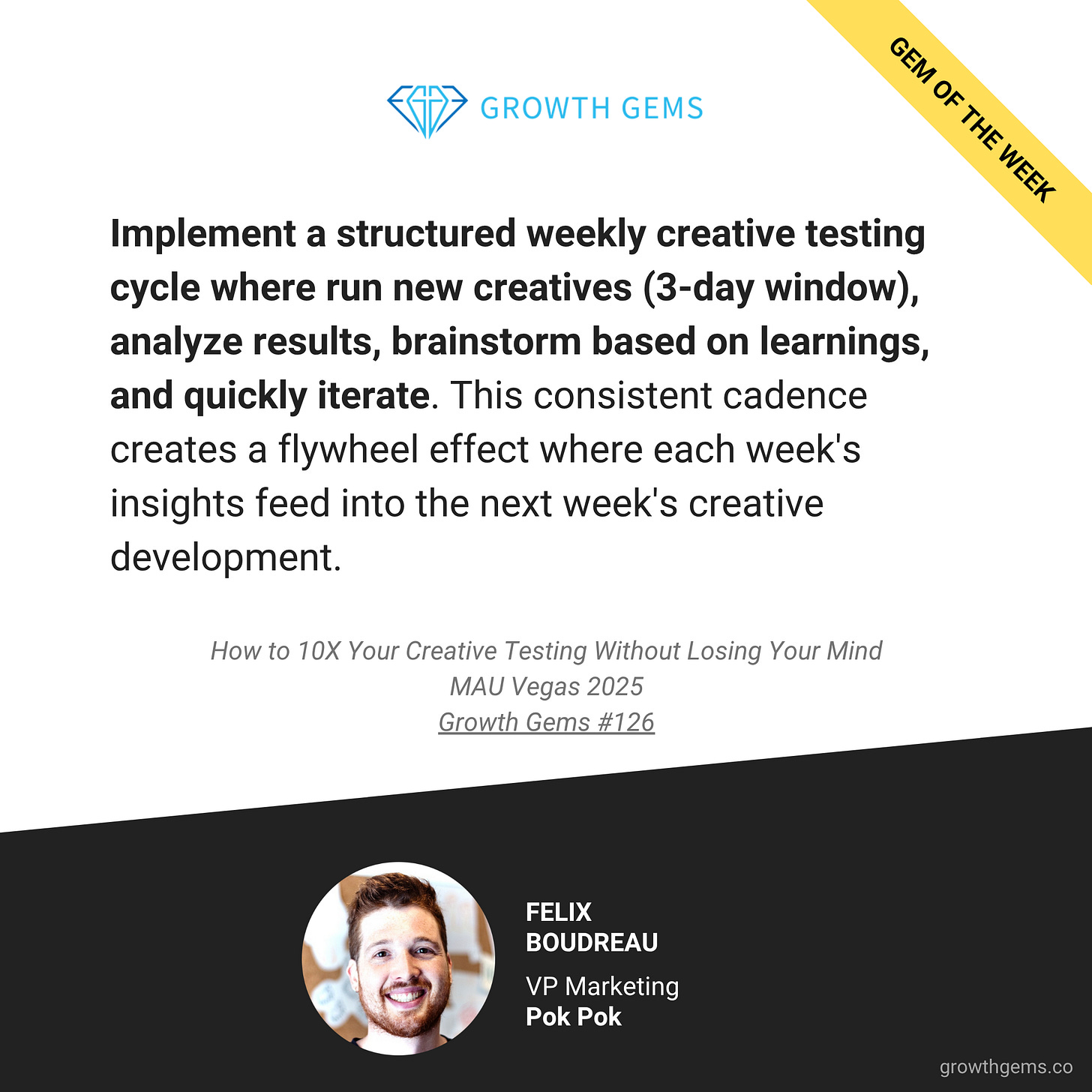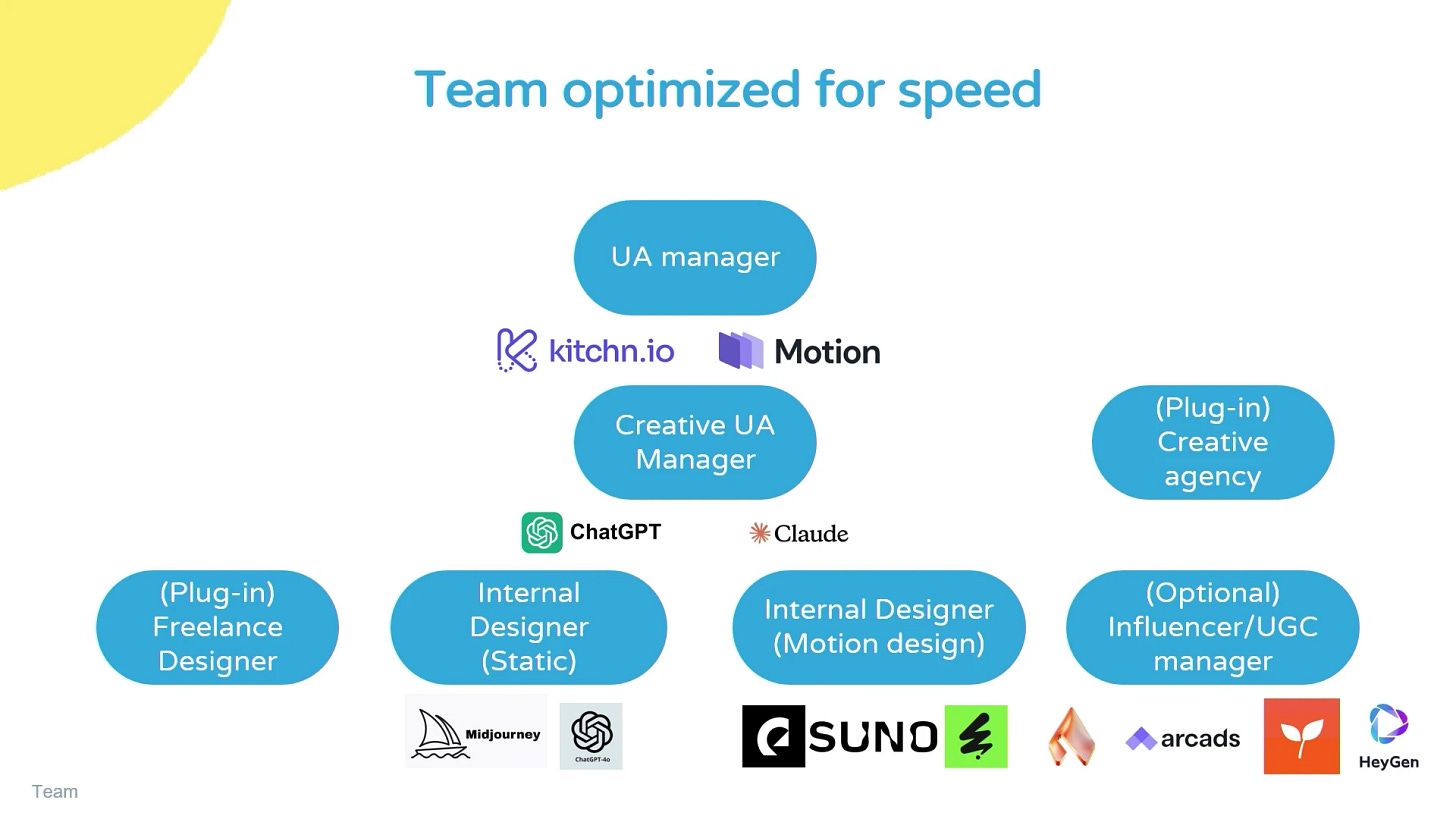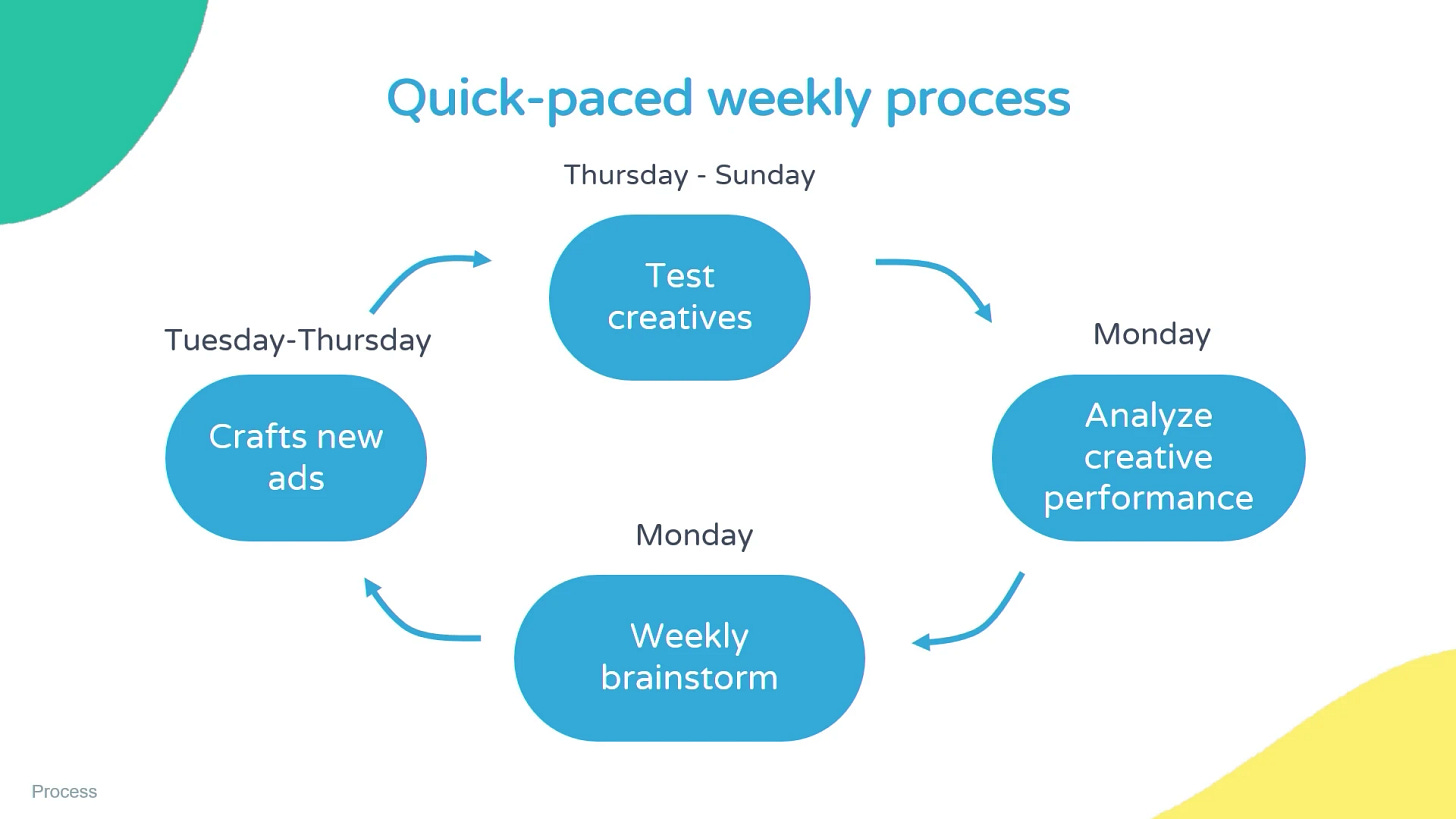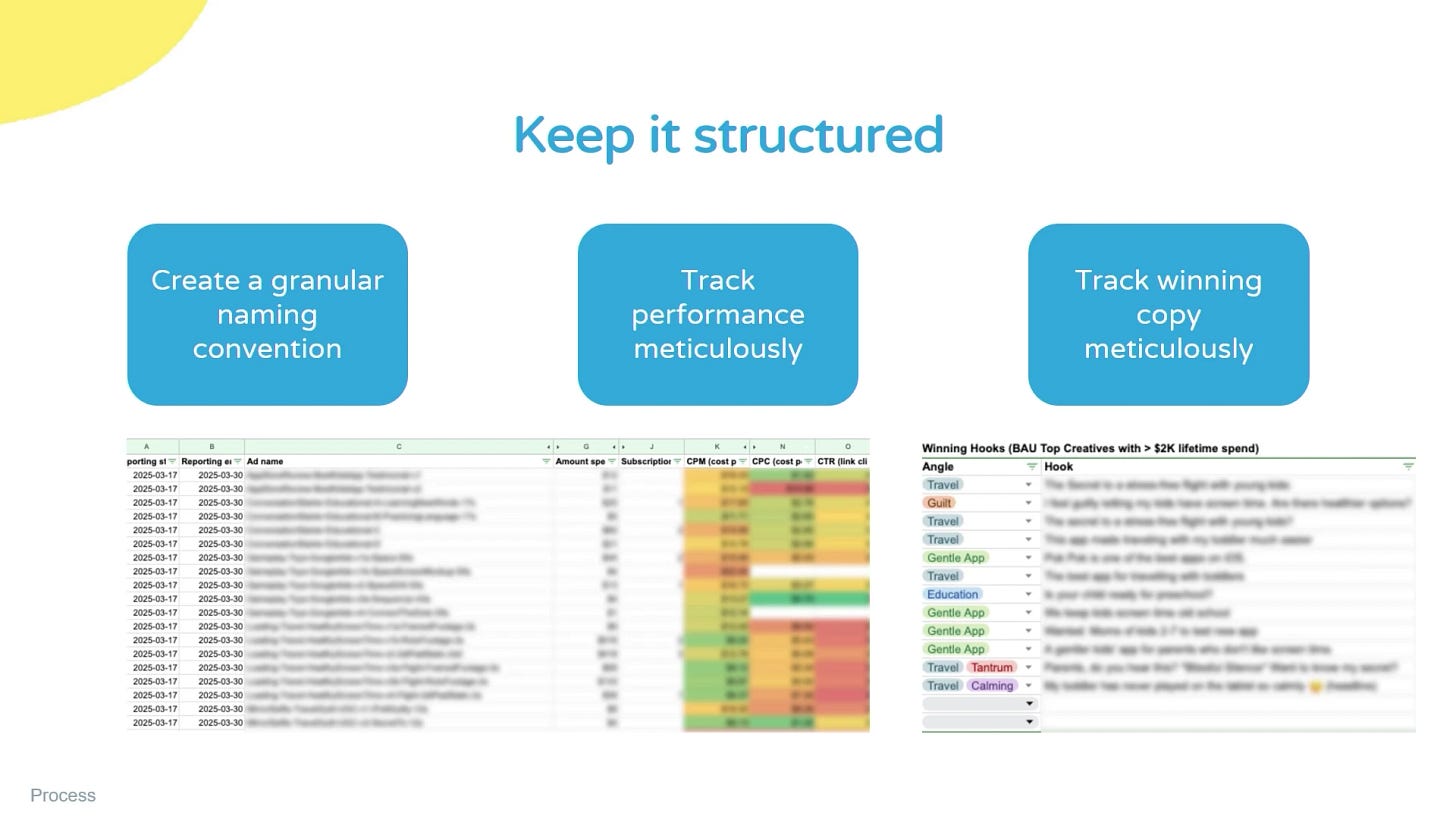Gems from Félix Boudreau (VP of Growth & Marketing at Pok Pok) in How to 10X Your Creative Testing Without Losing Your Mind at MAU Vegas 2025
Hi, fellow growth practitioner!
This week, I’m bringing you insights on Creatives for Paid UA.
I hope these gems will be valuable!
🥇 TOP GEM OF THE WEEK
I couldn’t make it to MAU this year 😔
But I wasn’t going to miss out on watching the talks!
As usual, there was some quality content, and today I’m sharing insights from a presentation on creative testing.
A lot of “fundamentals”, but also a great place to start if you want to build/revisit your current strategy and explore deeper related topics (yes, I’m going down a rabbit hole right now).
Note: if you were not registered for MAU, you can’t have access to the talks anymore.
SPONSORED INSIGHT & RESOURCE
Web-based funnels are here to stay, no matter how losely Apple ends up enforcing app2web payments (for the optimists out there)!
Of course, the web’s lower fees have always been a huge appeal.
But what’s at the top of my list is fast experimentation on onboarding.
With FunnelFox, a single person on the growth/marketing team can set up a funnel in a few hours to:
Validate/invalidate quickly if paid user acquisition to a web funnel is more profitable than app campaigns
Have a parallel “experiment stream” to test onboarding hypotheses
Both with better attribution and higher creative-to-funnel alignment.
I’ve experienced this first-hand! Below is also an example of this from their Glam AI case study.
No setup hassle, and a top-of-the-line product: AI-powered onboarding flows, optimized checkouts, built-in A/B testing, and strong performance analytics (plus all the integrations you want).
Schedule a demo with this link and a 20% discount for the first 2 months.
💎 When scaling creative testing, expect an initial flat period before wins emerge. Once you achieve your first significant creative win, learning compounds rapidly, leading to dramatic improvements in key metrics. Persistence through the initial phase is essential for achieving breakthrough results.
(01:29)
Félix estimated that top-performing health & fitness apps test about 7,000 ads (and 50,000 ads for apps like Impulse or WalkFit.
Why? The “hit rate” is low, so high-volume creative testing is a competitive necessity.
💎 Minor creative variations can produce dramatic performance differences - up to 4x between similar-looking ads. This underscores why extensive testing of small changes is essential, as seemingly insignificant details can have outsized impacts on all major metrics.
(05:24)
He shared the example of the 3 ads below, with the one on the left doing 2x better than the middle one and 4x better than the one on the right.
💎 Build a lean creative team that's 'creatively obsessed' - constantly analyzing winning ads, discussing failures, monitoring competitors, and tracking organic trends on social platforms. This obsession with creative performance creates a culture of continuous learning that drives breakthrough results.
(06:35)
Below is the team set up he recommends, along with some tools.
A good suggestion he made is to combine the influencer/affiliate management with the UGC relationship management to maximize efficiency. Finding high-quality user-generated content can be a game-changer for ad performance (UGC is not just ‘talking-heads’ btw), but it requires dedicated relationship management to source effectively.
💎 Leverage AI tools strategically across your creative production pipeline, with the biggest ROI being at the “design” level so you can produce more creatives and quicker. Don't overlook AI for music generation - tools like Suno and Envato can help create custom soundtracks that match your creative vision without licensing issues.
(09:31)
Check out Felix’s LinkedIn post for more details on the tools mentioned.
💎 Implement a structured weekly creative testing cycle where run new creatives (3-day window), analyze results, brainstorm based on learnings, and quickly iterate. This consistent cadence creates a flywheel effect where each week's insights feed into the next week's creative development.
(10:29)
For Pok Pok, performance is better Thursday-Sunday so that’s why they decided on the process below: they use a short 3-day window to determine winners/losers in order to maximize data quality (and move faster).
I believe this might lead to some “false-positives”, but I still think it’s smart because it’s better than missing out on a potential winner. You often hear that a winning creative can’t be missed, but there is such a thing as finding creatives that are “good enough” and that you can rely on when scaling (if you already have some good-performers and you’re above target).
💎 Run one new concept per ad set (each with several variations) so you understand how the learning is structured.
(12:10)
💎 Maintain a 70% iteration/30% new concept ratio in your creative testing mix. This balanced approach ensures you're extracting maximum value from proven winners while continuously exploring new territory. Adjust this ratio based on diminishing returns from iterations.
(12:21)
Biggest low-hanging fruit I’ve seen in terms of creative strategy? Being satisfied with having found a creative win and not iterating on it like crazy.
💎 Create a creative matrix that breaks down ads by value proposition angles and creative formats to systematically identify testing opportunities. This framework helps you discover untapped combinations and ensures comprehensive coverage of your value propositions.
(12:55)
Félix seems to be using Figma for this.
I’ve seen others, like Manson Chen, use mind maps👇
You might also be interested in Nick Candler’s article Referential Concepting: Is Anything Really Original? (the entire blog is worth reading).
💎 Implement a granular naming convention for your creative assets to enable deeper data analysis and pattern recognition. Don't rely on Meta's reporting tools alone - track performance metrics meticulously in your own system to maintain historical data and uncover long-term insights.
(14:11)
A granular creative naming convention is a no-brainer, at least in theory. Why wouldn’t you do it?
In practice, it’s much harder than it looks to put in place correctly, especially when working with a couple of agencies:
There is such a thing as being “too granular” → you can make things too complicated and slow your team/agency down
You put a lot of effort into carefully naming 95% of your creatives for “nothing” since they will fail (yes you can learn from failed creatives, but how much you learn also depend on how much they fail)
If you don’t define the right “modules” from the start, and you then change your granular naming convention, it’s a mess
So, choose carefully. And be ready to “police” your freelancers and agencies…
💎 Maintain a library of winning ad copy that designers can access directly. It makes it easy for designers to dig into it and to create new creative without having to have a brief. It also allows to easily find and use it in other areas (e.g., onboarding copy).
(14:42)
Something else worth having: a ready-to-go brief/doc for agencies and freelancers that contains product/brand info, creative wins & learnings, user research (or input to user research like reviews and comments).
💎 Apply winning ad copy directly to your product onboarding flow to create messaging consistency from acquisition to activation. This cross-functional application of creative insights can significantly improve conversion rates throughout the user journey.
(15:01)
For example, you can put the copy directly on the first page of your product onboarding.
Applied to web-based funnels, you can leverage utms to adapt automatically the copy to your top winning creatives.
💎 When you find a winning creative format, systematically apply it across different situational contexts relevant to your audience. This structured iteration approach can yield multiple winners that outperform the original, maximizing the value of your creative discoveries.
(15:39)
The examples he shared clearly illustrate that.
💎 Refresh fatiguing ads by keeping what works but slightly modifying them. Example: going from just a tweet to a tweet on a street pole, then turning it into a video. Sometimes the most effective creative iterations aren't the most obvious ones - they're the ones that surprise users enough to interrupt their scrolling behavior.
(16:24)
See you next time.
Stay curious!
— Sylvain
Chief Insights Miner at Growth Gems ⛏️
(Fractional) Head of Growth at Reading.com
Growth Consultant/Advisor for high-potential subscription apps (hit reply if you want to chat - bonus if you’re in Education, Meditation & Cooking categories)
🔗 Source:

















So many gems in this one, i keep getting back to it! Thanks for sharing